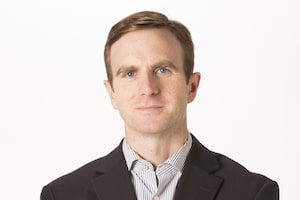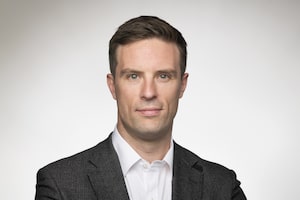Finning International Inc is the world’s biggest dealer of Caterpillar Inc equipment.
A few years ago, heavy equipment dealer Finning International Inc. FTT-T started using a new inventory management software program in Chile. The idea was to modernize and digitize an antiquated system. The rollout did not go well.
Hal Kvisle, Finning’s board chair, said in an interview last week that the implementation of the software was “rough and rocky,” and that it was “troubling and irritating to some of our customers, and driving our own people crazy.”
The rollout hit Finning’s shares hard, and some money managers threw in the towel. Brian Madden cashed out his client’s positions in the spring of 2019.
“I was tired of the profit misses, the tepid growth and the [inventory] systems problems that they were struggling with in South America. That came out of the blue and was not telegraphed well,” said Mr. Madden, the chief investment officer with First Avenue Investment Counsel in Toronto.
Bank of Nova Scotia's newly appointed CEO Scott Thomson.SCOTIABANK/Reuters
While the problems with the software system occurred deep into the tenure of CEO Scott Thomson, Mr. Kvisle defends his handling of the situation, saying he took ownership of the problem promptly, and appointed a special team in Chile to fix it. “All of the bumps in the road were smoothed out within about six or eight months,” he said.
Vancouver-based Finning is the world’s biggest dealer of Caterpillar heavy equipment, parts and engines. The bulk of its business is servicing the oil patch and mining industry in Western Canada, but it also has operations in the United Kingdom and several South American countries.
Last week, Bank of Nova Scotia BNS-T stunned its investors by naming Mr. Thomson, Finning’s CEO of the past nine years, as the bank’s next chief executive officer. Although he’d been a member of Scotia’s board since 2016, he had no recent banking experience. Before his time at Finning, he was chief financial officer of Talisman Energy Inc. for five years, and had worked for five years at Bell Canada parent BCE Inc. While Mr. Thomson has significant operating experience in Chile, a market that is important to Scotiabank’s growth strategy, Finning has struggled in the region on his watch.
Finning’s stock market performance under Mr. Thomson has also been poorer than industry peers.
The company’s shares have returned 45 per cent, including dividends, during his tenure, while industry peers H&E Equipment Services Inc., Toromont Industries Ltd., United Rentals Inc. and Ashtead Group PLC returned 85 per cent, 406 per cent, 449 per cent and 668 per cent, respectively, according to S&P Global Market Intelligence.
Who’s to blame for Scotiabank’s CEO succession mess? The clumsy board of directors
“It’s easy to feel frustrated with Finning’s performance during Scott’s tenure, in particular because we believe much of the poor share price performance was the result of management’s own decision-making,” said Kevin Burkett, portfolio manager with Victoria-based Burkett Asset Management.
Like Mr. Madden, Mr. Burkett sold his clients’ holdings of Finning shares during a period of uneven financial performance, when the company was struggling to get its inventory problems under control.
“Part of our investment process is talking with customers, and we heard, repeatedly, that a change in approach to parts supply and service wasn’t being well received in the field,” Mr. Burkett said. “These problems seemed to be exacerbated by poor implementation of an [inventory] system that haunted the company for years.”
Mr. Thomson declined an interview request from The Globe and Mail.
A new CEO doesn’t make Scotiabank a buy - but this does
Finning’s problems over the years go beyond its inventory management system. Its has long struggled with operations in Argentina, which predated Mr. Thomson’s tenure but do not seem to have got much better. Mr. Kvisle characterizes Argentina as a particularly erratic place to operate. “They put up barriers that make it difficult for us to import Caterpillar equipment,” he said. “They’ve put up barriers that make it difficult to take the money out of Argentina to buy the next round of equipment. They’ve slowed down the oil and gas industry, sped up the oil and gas industry, stimulated mining, shut down mining.”
When asked, in light of all of the problems in Argentina, why Finning didn’t walk away from the market under Mr. Thomson’s reign, Mr. Kvisle said:
“Given that Caterpillar does not run away from markets that are having difficulty, the bottom line is neither do their dealers.”
To be sure, Finning’s poor stock performance can’t be pinned entirely on Mr. Thomson. His tenure overlapped with several sharp downturns in both the oil and mining sectors, as well as turmoil from Brexit in the U.K. Meantime, current recession worries in many of Finning’s markets have investors concerned about its prospects.
Canaccord Genuity Group analyst Yuri Lynk wrote in a note to clients last week that Mr. Thomson made solid progress over the years in certain aspects of Finning’s business. He led a restructuring that resulted in $100-million a year in savings, earnings per share grew during his time, and financial metrics such as return on invested capital also went up.
Mr. Lynk also said in an interview that Mr. Thomson’s soft skills are strong. He is known to be affable, and is “well liked by the people who worked for him.” He spent plenty of his time at Finning visiting branches, and building relationships with his employees, Mr. Lynk added.
Still, niggling performance issues that Finning continues to struggle with cast a shadow on Mr. Thomson’s time at the heavy equipment dealer. Raymond James analyst Bryan Fast wrote in a note to clients last week that while Finning has made improvements in its operations, it still trades at a heavy discount to Toromont, its Canadian competitor, and at a book value ratio of 1.7 times its equity, which is well below its 20-year average of 2.3 times, another signal that investors value it less than before.
Mr. Madden said he believes a major reason for the discount is that Toromont is a better-managed business. It carries a lot less debt than Finning, which acts as a buffer in turbulent times.
“It’s just been sort of more tightly operated. And it has less cyclicality to it as well. The amplitude of highs and lows and their profit cycle are not as wild as Finning,” he said.
Finning’s chairman doesn’t like the comparison to Toromont, even though he concedes it is a peer the company is routinely measured against. He points out that Toromont’s business is focused on Ontario and Quebec’s construction industry, which has proven to be far more robust than Finning’s Western Canada, oil patch-heavy business model.
Mr. Kvisle said he can’t think of even one criticism of Mr. Thomson’s leadership during his tenure. He’s bullish on his prospects at Scotiabank and believes he may well end up proving the naysayers wrong.
“Scott has the capability to build and motivate a very strong team,” Mr. Kvisle said. “He understands the business of the Bank of Nova Scotia much better than some people think he does. They’re just not aware of the depth of his knowledge based on his six years that he’s been on the board, and I think he’s going to do great things.”
With a report from David Milstead.
 Niall McGee
Niall McGee James Bradshaw
James Bradshaw